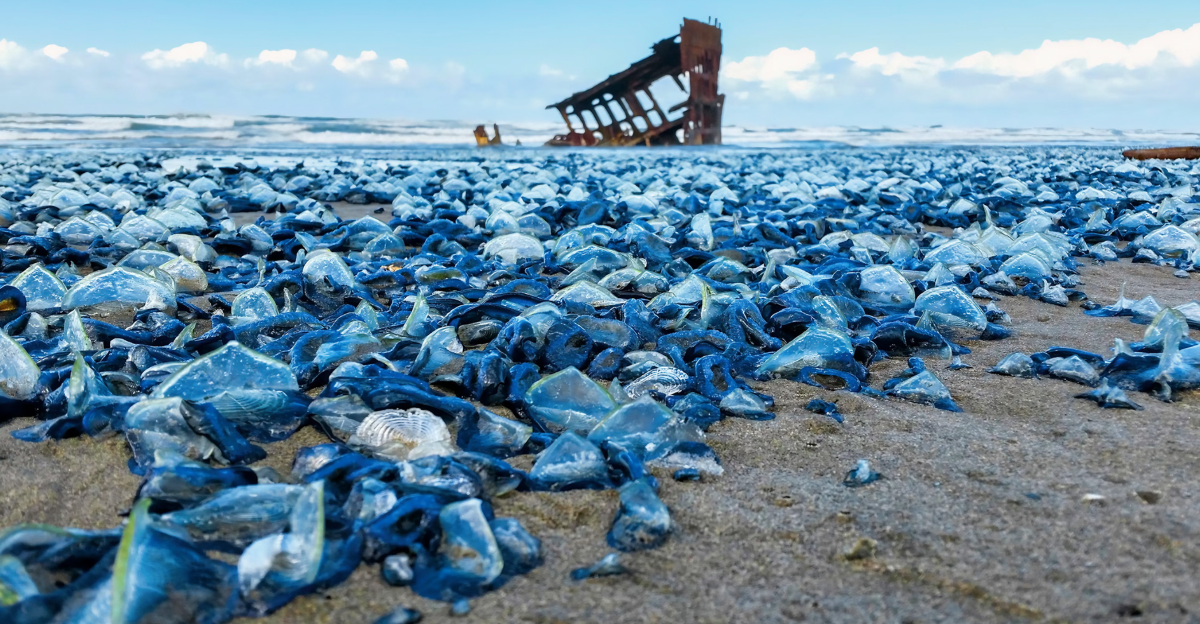
California’s coast is no stranger to the occasional marine animal or flotsam washing onto its beaches. However, recently, coastlines have seen tens of thousands of unexpected guests wash up onto the sand. Beachgoers and locals were met with the eerie sight from San Diego all the way to Marin County. The shores were glimmering a bright blue instead of their usual sandy brown.
Initially, many people had no idea what they were, and it’s not surprising given how otherworldly the gelatinous creatures look. Many wondered what the uninvited guests were and what caused them to wash up by the thousands.
A Blue Invader

The recent beach experience for many residents and tourists has become a far cry from what’s usually expected. The situation is under the watchful eye of officials as the blue invaders disrupt tourism and greatly impact local wildlife.
People are all asking the same questions: Are these creatures harmless, or pose a threat to beachgoers? And how will the environment be affected? While many are used to seeing the occasional washed-up marine animal, nothing like this has happened in recent memory, prompting both concern and confusion.
Something Unfamiliar
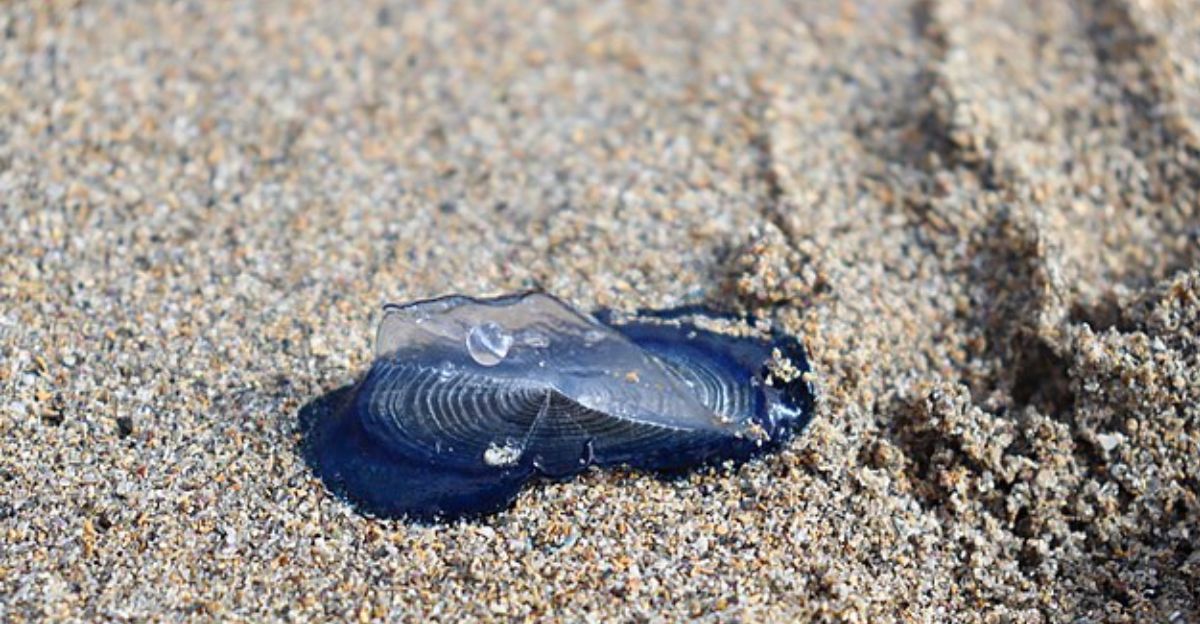
People who’ve seen the wash up of these creatures first hand have described the scene as something “surreal.” The creatures look like tiny, translucent chips that shine on the beach sand during the day. They look like something unfamiliar while retaining traits that people have seen before.
These jellyfish-like creatures have stirred up curiosity, and people have even been seen throwing caution to the wind and picking them up – something most people shouldn’t do unless they know if the animals are dangerous or not. While they have landed on the beach in the past, they have never washed up in such a large quantity before.
Why Did They Wash Up?
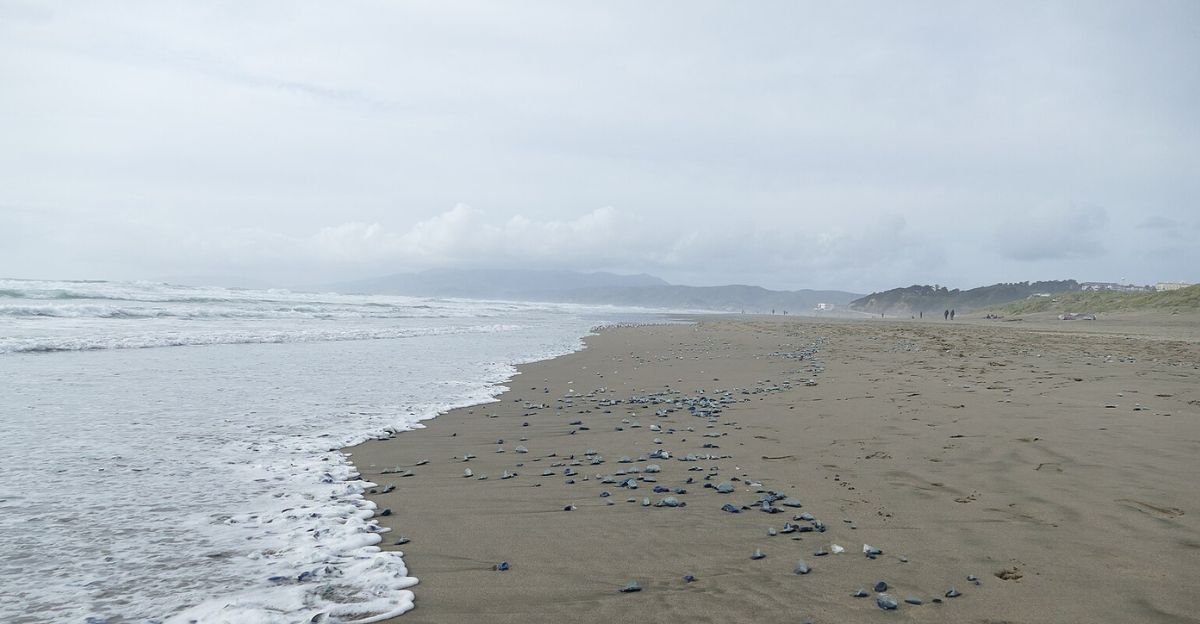
The scientific explanation behind this surprise invasion is a marvel caused by natural oceanic and atmospheric forces. The creatures usually swim in the deep sea, but due to seasonal winds and currents from the ocean, they have been swept up with the tide and onto beaches.
With such a large amount of these animals washing ashore at once, other factors like recent storm patterns and warmer temperatures could have contributed as well. The animals were driven out of the water and onto the beach in huge masses, and understanding more about them could help in predicting events like this in the future.
Velella velella
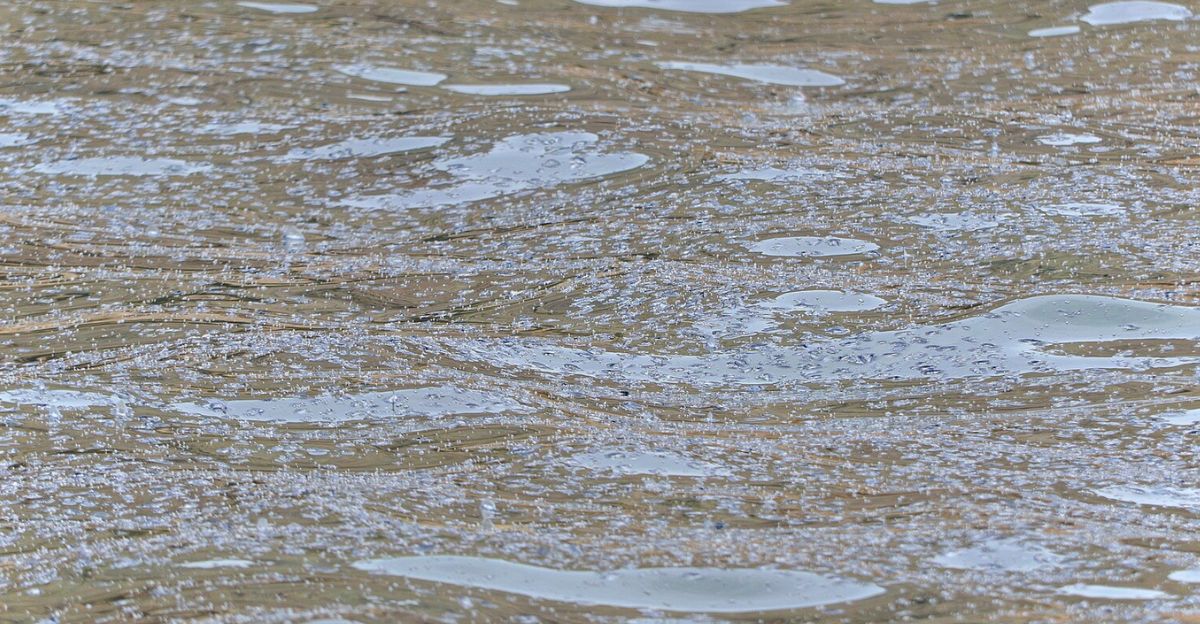
While many beachgoers may still not fully understand the unreal blue mass that’s blanketing beaches, Velella velella are the small blue invaders responsible. They are more commonly referred to as “by-the-wind sailors” and are small polyps rather than jellyfish.
They float in mass colonies on the ocean surface and can move using their sail-like fins. Unlike many other animals, they use the wind to their advantage, using their bodies to move with the wind. This method of travel is surprisingly effective, enabling them to move vast distances.
Polyps
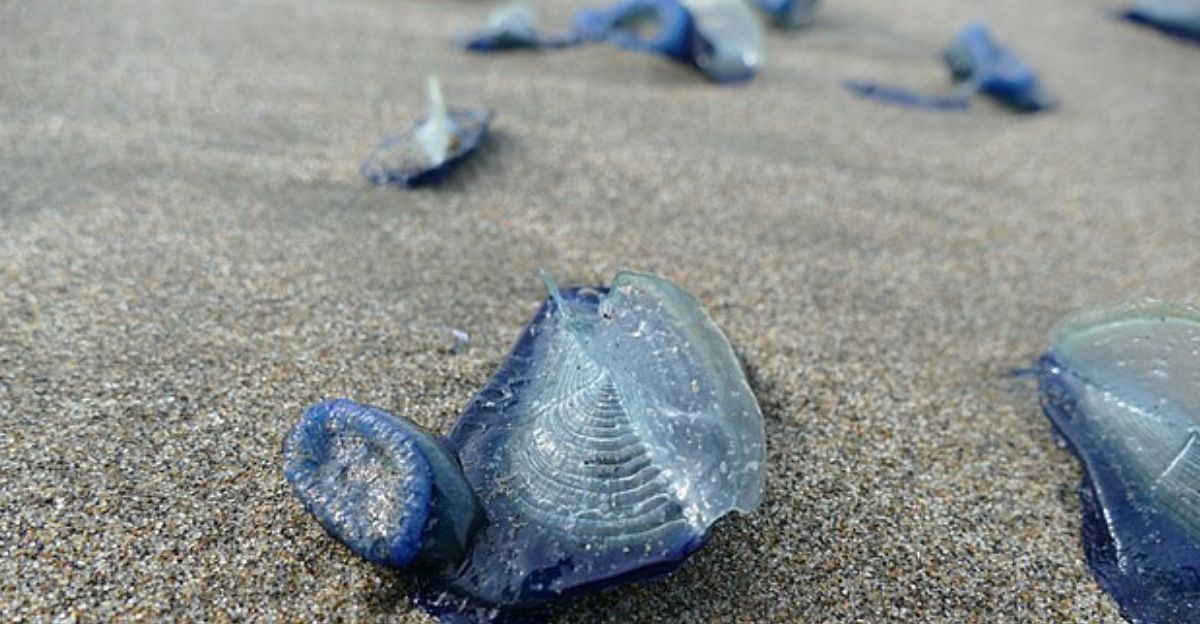
While it’s understandable that many may mistake these marine animals for jellyfish, they are polyps that live together in colonies that act as one individual, with members of the group having their own specialized function. Some members are responsible for reproducing and growing the colony, while others are responsible for feeding.
Velella vellela’s main source of nutrients comes from feeding on plankton, and it is not typically a dangerous marine animal, especially to humans. However, they do have a defense mechanism in the form of a sting – they have tentacles that can cause discomfort to individuals who do not properly pick them up.
What Their Washup Means
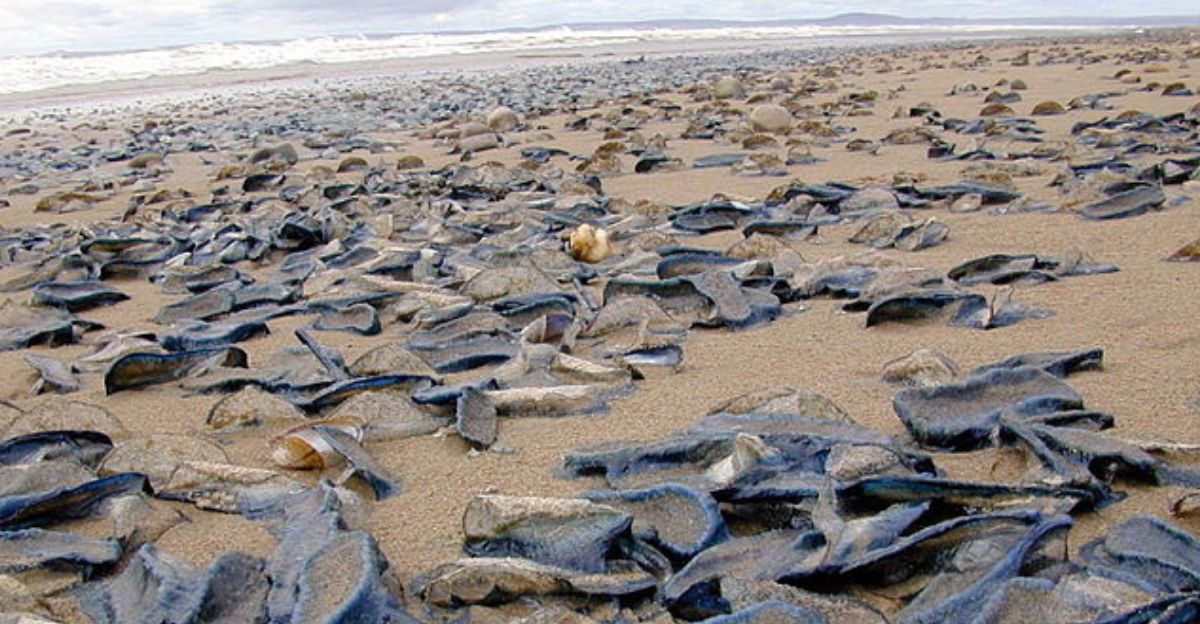
With such a large number of blue polyps crashing on beaches in California, they have caused many marine predators to follow them. Animals like sea turtles, sunfish, and seabirds usually feed off of the colonies when given the chance.
These animals have been attracted to the beaches, and in some cases have become stranded themselves, showcasing the environmental impact such an event can have on local marine populations. Despite this event being completely natural, it has disruptions for local wildlife and beachgoers alike.
Not The First Time It Has Happened
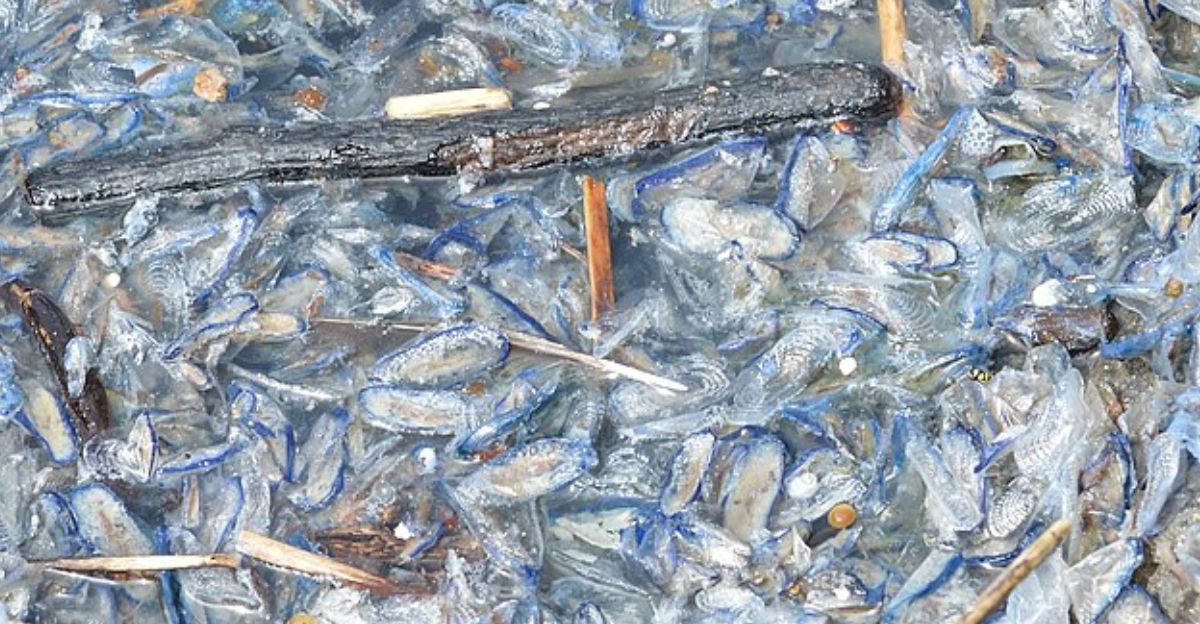
This isn’t the first time that Velella Velella have been carried by wind and ocean currents onto the beach in such large numbers. Around ten years ago, two similar events were recorded. As it happens more and more, a pattern could be linked between their beaching and Pacific wind behavior.
The patterns of the blue polyps are predictable, and they generally follow the natural currents and winds that come with seasonal changes and are usually most prevalent in spring and early summer. As different factors change and disrupt environmental routines, scientists can gain a better understanding of the consequences it has on marine life, including Velella velella.
Advice For Beachgoers
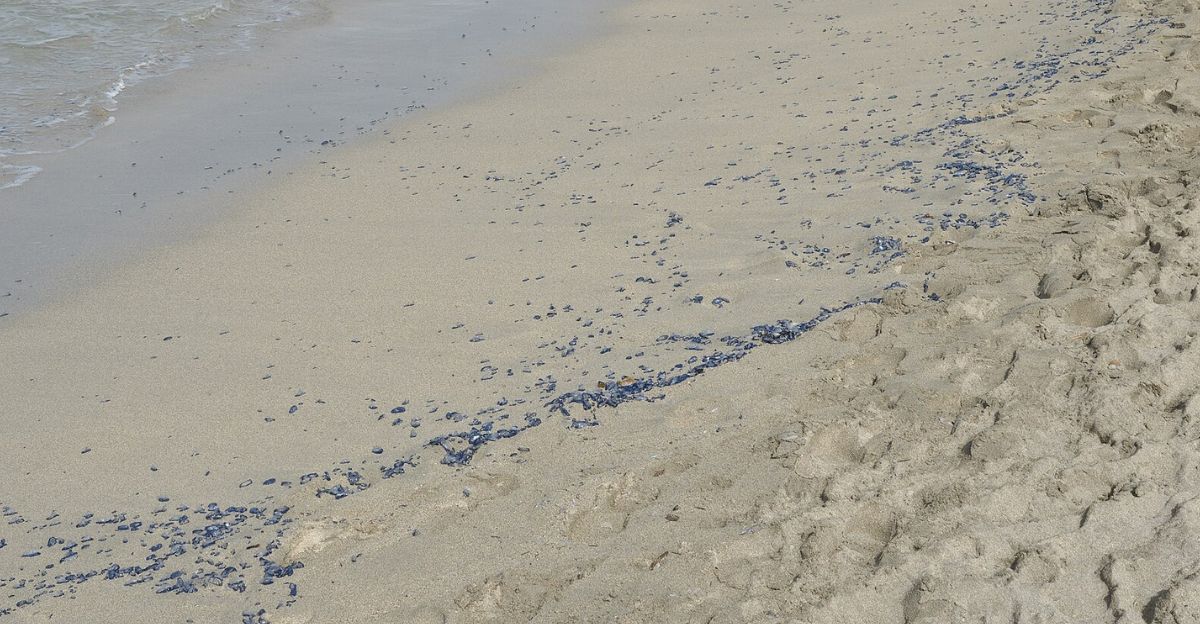
There’s no need to panic as these mostly harmless marine animals wash ashore. While they may disrupt usual beach activities, they don’t pose a threat to humans, but it is recommended that people avoid contact with them, as their sting can cause irritation on skin, open wounds, and eyes.
Beachgoers can safely admire the animals from a distance, but if curiosity proves too great and contact is made, it’s best to gently hold them by their sails, away from their stinging tentacles. Adhering to this advice will ensure that locals and tourists won’t put themselves at risk.
What Will Happen In The Future?
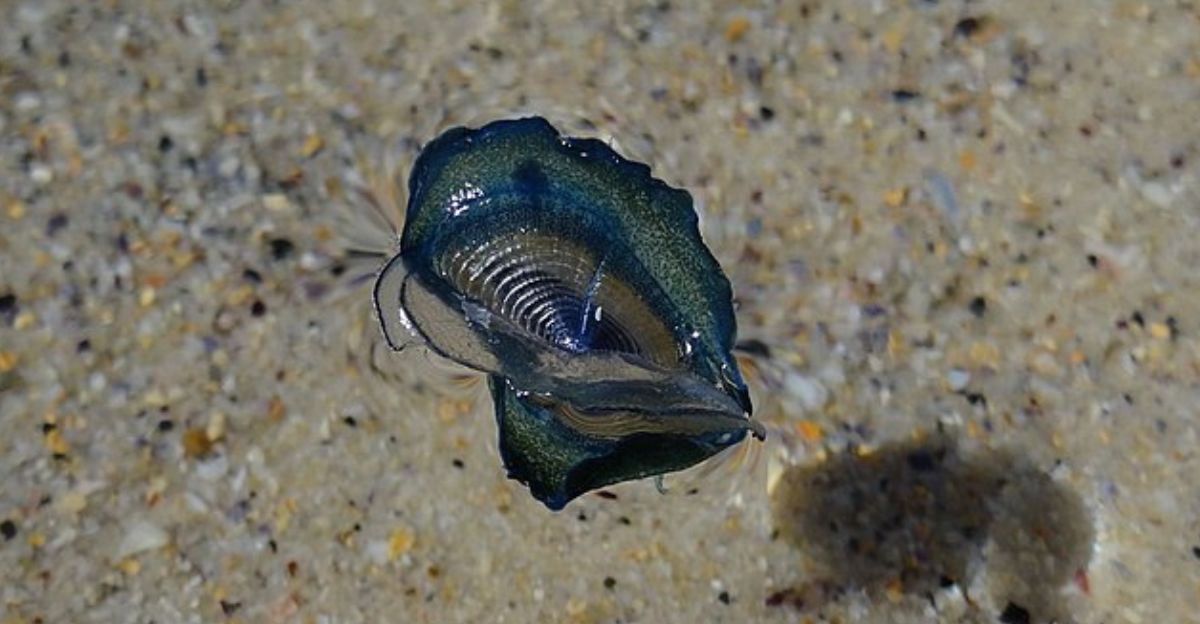
In a rapidly changing world, the future could see further changes in weather patterns, and perhaps more common occurrences of velella velella being washed up on California beaches, sparking curiosity and concern among beachgoers once again.
This cycle is expected to continue, but its frequency depends entirely on the overall balance of the ecosystem, oceanic currents, and weather patterns. Scientists will keep a watchful eye, as they always do, ready to educate the public about the strange phenomenon that is increasingly occurring.
Explore more of our trending stories and hit Follow to keep them coming to your feed!

Don’t miss out on more stories like this! Hit the Follow button at the top of this article to stay updated with the latest news. Share your thoughts in the comments—we’d love to hear from you!







